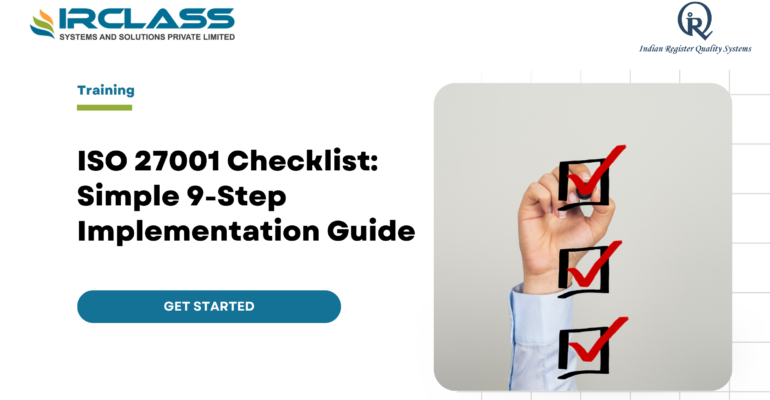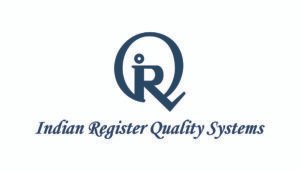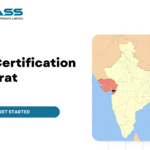Step-by-Step Guide to Becoming an ISO 27001 Implementer
January 10, 2025 2025-02-22 12:32Step-by-Step Guide to Becoming an ISO 27001 Implementer

Step-by-Step Guide to Becoming an ISO 27001 Implementer
Step-by-Step Guide to Becoming an ISO 27001 Implementer
Modern protection of data in this generation is more of a must-do activity than a mere necessity. ISO 27001 is an Information Security Management System (ISMS) that assists organizations in handling their information. For any organization considering implementing ISO 27001, or for those aiming to raise awareness about information security, this guide will explain how to become an ISO 27001 implementer in a few easy steps.
What is ISO 27001?
ISO 27001 is a specification under the International Organization for Standardization (ISO), for establishing, implementing, sustaining, and refining an Information Security Management System. It is involved with the management of information security risks; in other words, the information in your organization cannot be accessed, altered, or even disappear. Thus, organizations demonstrate their willingness to safeguard information assets and gain credibility with customers and stakeholders.
What needs to be done to become an ISO 27001 Implementer
Well, now let us list down major activities that will help transform you into an ISO 27001 implementer and how it can be done.
Step 1: Understand the Basics of ISO 27001
To achieve this, however, a certain level of understanding of ISO 27001 must be achieved before the actual implementation process can begin. Find out what it is, how it works, and what it means. This includes the knowledge of the Plan-Do-Check-Act (PDCA) cycle, which is at the base of ISO 27001:
- Plan: Risk assessment and the assessment of the need for risk mitigation activities.
- Do: Implement these controls.
- Check: Assess the effectiveness of the controls that are in place in an organization.
- Act: Introduce variations for its continuous improvement.
By knowing the foundation, you will be in a better position to implement and maintain an effective ISMS.
Step 2: Build Your Team
ISO 27001 can be implemented, and it is not a one-man show. To ensure this is done effectively, you will need a team of specialists who understand the nature of your organization, its policies, and goals. The management of the implementation process is coordinated by the ISO 27001 implementer or the project leader.
They should include IT, HR, legal, and other officers from various departments of the organization that you think should be part of the team. This also helps in ensuring you get the best approach on how to guard information in all parts of your business.
Step 3: Define the Scope of Your ISMS
The next component of the requirement is that of the scope of the ISMS. This involves identifying which subsystem of the organization is to be involved in the system. It can impact the whole organization or only some divisions, activities, or even branches.
The relevance of the scope is because it paints a picture of what is being done concerning security and where to concentrate more, as those areas are most likely to be attacked.
Step 4: Conduct a Risk Assessment
Risk assessment is one of the primary concerns of ISO 27001. It entails the performance of risk assessments and identifying risks to your information resources. Think of it as answering these questions:
- Which information should be considered to be privileged?
- What is in danger with this information?
- What if these risks become real?
After that, it is possible to evaluate the likelihood and the impact of the listed risks. This assists you in identifying which risks should be of concern in the future.
Step 5: Create a Risk Treatment Plan
Having identified the risks, the next step is to determine how to deal with them. That is where a risk treatment plan is useful. Regarding each risk, your plan must contain data about how you are going to minimize or eliminate it.
Common risk treatment options include:
- Risk reduction: For example, transferring an activity to remove the risk altogether.
- Minimizing the risk: For instance, through implementing controls that will act as a buffer to the risk.
- Outsourcing: Moving the risk to a third party or buying an insurance policy.
- Accepting the risk: If it is within the company’s acceptable risk level.
Step 6: Develop Policies and Procedures
ISO 27001 suggests that the management of the ISMS should lead to documented policies and procedures. These documents are the policy references of your organization on information security.
Some essential policies include:
- Information Security Policy
- Access Control Policy
- Incident Management Policy
- Data Protection Policy
These policies should be well stated, easily comprehensible, and formulated specifically for your organization.
Step 7: Implement the ISMS
Lastly, when you have defined a clear plan and all policies are in place, you should implement the ISMS. Implementation involves:
- The use of technical controls such as firewalls and encryptions.
- Conducting awareness programs to educate employees on what they need to do to avoid compromising information.
- Establishing procedures for identifying risks and threats, along with measures to address them.
In this stage, the key is communication. ISMS should be known to all people in your organization, along with their roles concerning the system.
Step 8: Monitor and Measure Performance
It is also equally necessary to lay much stress on the efficiency package after the establishment of the ISMS. This involves:
- Audits that evaluate the extent of compliance of the organization to ISO 27001 standards.
- Using Key Performance Indicators (KPIs) to measure the effectiveness of your controls.
- Examining logs and reports to identify threats to information security.
This has the added advantage of allowing you to address issues before they escalate.
Step 9: Prepare for Certification
In case you have to be compliant with ISO 27001, the next step is to prepare for the certification examination. Here’s how:
- Decide on the certification body that will carry out the audit and ensure you select the right one.
- Make sure all paperwork is in order and as current as possible.
- Organize a mock audit to discover what aspects of the business are not 100% compliant and how to rectify them.
The certification process typically involves two stages:
- Stage 1 Audit: The auditor checks whether documentation corresponds to the requirements of ISO 27001.
- Stage 2 Audit: The auditor establishes the effectiveness of the practical implementation of your ISMS by your organization.
Step 10: Achieve Certification
Congratulations! If your organization has passed the audit, it will be awarded an ISO 27001 certification. This demonstrates a commitment to information security and enhances competency in the market.
Step 11: Maintain and Improve Your ISMS
ISO 27001 is not an event where, once implemented, you can set it aside and forget about it. To maintain your certification, you’ll need to:
- Perform internal control tests and management reviews regularly.
- Stay updated on new threats and vulnerabilities.
- Modify the ISMS as it adapts to changes in the organizational environment.
This ensures that your ISMS remains relevant and aligned with organizational objectives.

Why Choose Training for ISO 27001 Implementation?
Thus, it is possible to conclude that the implementation of ISO 27001 indicates sufficient knowledge and practical experience. To gain the tools for preparation and implementation, one has to take an ISO 27001 lead implementer training.
Training programs, such as those offered by IRQS, cover key topics, including:
- The structure and requirements of ISO 27001.
- Risk assessment and treatment planning.
- The concept of ISMS implementation.
- Preparing for certification audits.
The training will help build the morale you require when leading your organization through ISO 27001.
Conclusion
ISO 27001 is a satisfying procedure that prepares individuals to protect an organization’s information. The steps outlined will help the organization cultivate an ISMS, certify it, and improve it continuously.
You may still be wondering how to get started with your ISO 27001, and inviting IRQS into your organization may be wise. Having conducted training programs with the help of ISO experts and years of experience, IRQS is a brand users can trust for ISO standards. If it is your desire to achieve promotion in your workplace or an organization seeking compliance, IRQS is the solution.
Begin today and start the process of ensuring your organization has a tomorrow.





